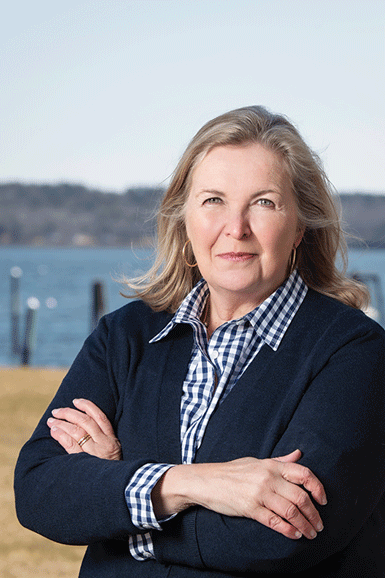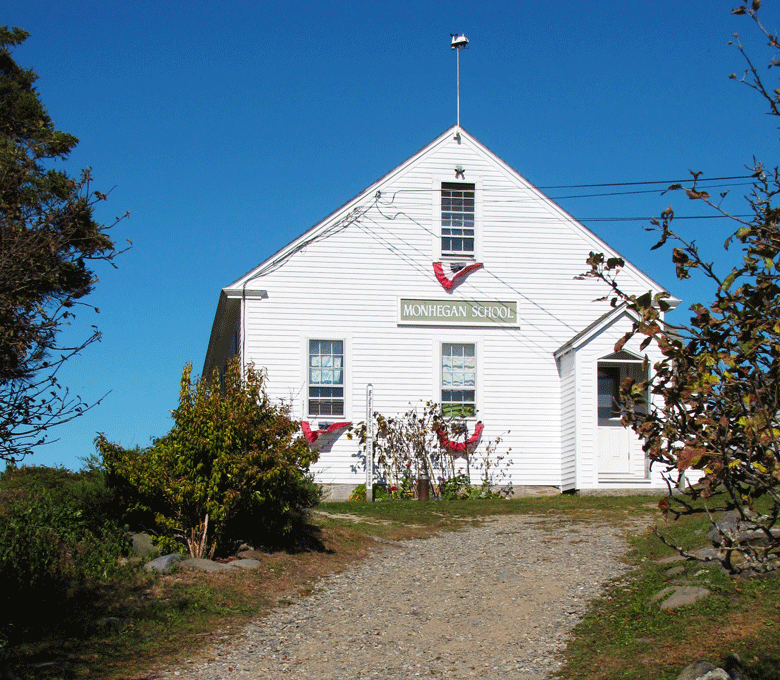My father had the honor of cutting the celebratory ribbon for the 150th anniversary of the Chebeague Island District 9 School House last month. At 93, and as the oldest living graduate, he can still remember specifically where he sat in the school room, “middle row, at the very end,” and how he cried as a kindergartener when forced to wear uncomfortable school clothes after spending summers running carefree.
He likes to say that he graduated second in his class—a class of two! The statistics on that 1948 graduating class of two are easy to comprehend. As my tall-for-his-age father wrote in his comical salutatorian speech, 50 percent of the graduating class were shorter than average, and 50 percent were taller. In fact, exactly one half of the class was 20 inches shorter than the other; 50 percent were male, and 50 percent were female. And so it continued.
Height notwithstanding, that graduating class might have included more graduates had some of the students not moved to the mainland or simply left school to go fishing—challenges that persist today.
Teaching on an island requires a level of ambidexterity that is impressive.
Across Maine this autumn, almost 175,000 students are in schools across the state, and some have returned to schools on islands along the coast. Like my father, many are facing small class sizes in schools with diminishing attendance over the past decades.
On some of our year-round, unbridged islands, total enrollment is hovering between four to 10 students and in one case it is as low as one student, and in some cases, as low as one or two students.
Teachers are returning, too. Teaching on an island requires a level of ambidexterity that is impressive. A conversation with Kaylin Wu, one of our ace Island Institute Fellows working with Vinalhaven’s Lego Robotics Club, highlighted this. She reminded me that what might be a day trip for most mainland students can become a demanding, multi-day commitment for students, parents, and teachers who must navigate ferry schedules, additional expenses, and over-night travel.

It seems like the grim storyline is already written for island schools given the shrinking number of students, the challenges of attracting and retaining teachers, and the growing expense of funding island schools. The odds are not in their favor.
Schools, however, play an undeniable role in the ecosystem of a thriving, island community. They are the centerpiece for attracting young families, who are essential to sustaining our islands. They attract energetic and courageous teachers who are drawn to island schools and become part of the fabric of the community. Schools are often meeting grounds for community activities. They are at their core an essential institution that fosters diversity, critical thinking, and principles of democracy.
Investments in island schools are investments in long-term community health.
The research literature points to a few critical interventions to fortify remote schools:
• focus on place-based education to build excitement about our island communities and their inherent assets
• expand broadband quickly to ensure that all students and teachers can take advantage of online educational resources at school and from home
• welcome teachers into the community while also ensuring they are connected to other teachers facing similar challenges
• have professional development opportunities, and connect remote island communities and students to each other.
Island Institute’s own Outer Island Teacher and Learning Collaborative (TLC) is a pioneering effort putting these recommendations into action. Even before the pandemic, we were working with island communities to create a resource-rich, peer-to-peer network to enhance the education and support for students and teachers alike.
Our experience with this program suggests the future of island education and community vitality is still very much ours to define.
The school that graduated my father and his singular classmate is now the home to the Chebeague Island Historical Society. There is now a new school on our island, which continues a longstanding commitment to island education and serves as a centerpiece of this community. We’re still writing the story.
Kim Hamilton is president of Island Institute, publisher of The Working Waterfront. She may be contacted at khamilton@islandinstitute.org.





